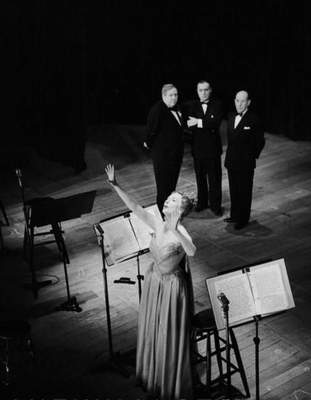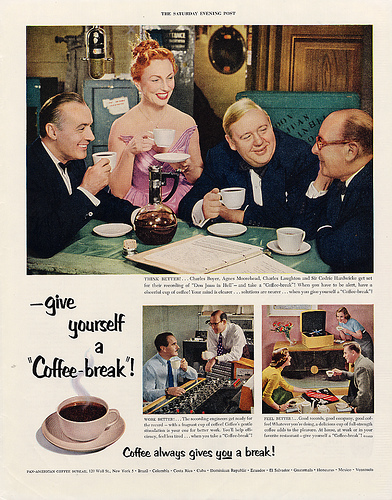 I’ve written quite a bit in recent years about what I call the “middlebrow moment,” the period in the Fifties and Sixties when the mass media–especially TV–made a concerted attempt to introduce highbrow fare to their viewers and readers, presenting it in an accessible and engaging way and operating on the assumption that ordinary people wanted to expand their cultural awareness.
I’ve written quite a bit in recent years about what I call the “middlebrow moment,” the period in the Fifties and Sixties when the mass media–especially TV–made a concerted attempt to introduce highbrow fare to their viewers and readers, presenting it in an accessible and engaging way and operating on the assumption that ordinary people wanted to expand their cultural awareness.
In tomorrow’s Wall Street Journal “Sightings” column, I take a look back at one of the most fascinating of all such ventures, the First Drama Quartette’s touring version of George Bernard Shaw’s Don Juan in Hell. This production, in which Charles Laughton, Charles Boyer, Cedric Hardwicke, and Agnes Moorehead donned evening dress and read Shaw’s play on a bare stage, played from coast to coast from 1949 to 1952. It was performed everywhere from Carnegie Hall to small-town high-school gymnasiums, and a half-million Americans came to see it. Laughton, who directed the production, made the cover of Time on the strength of the show’s success.
 In 1952 Columbia Masterworks made a complete original-cast recording of Don Juan in Hell that was issued as a two-LP set. It went out of print four decades ago and had never been reissued in any format until Saland Publishing, an audiobook outfit, released it without fanfare as an mp3 download. (You can purchase it here.) When I ran across this reissue a couple of weeks ago while doing online research on Laughton’s career, I resolved to bring it to the attention of the general public. Hence Saturday’s column, in which I tell the story of how Laughton and Paul Gregory, his producing partner, got the idea to take Don Juan in Hell on the road–and how American audiences responded. All in all, I can’t think of a more illuminating and exemplary chapter in the story of America’s middlebrow moment.
In 1952 Columbia Masterworks made a complete original-cast recording of Don Juan in Hell that was issued as a two-LP set. It went out of print four decades ago and had never been reissued in any format until Saland Publishing, an audiobook outfit, released it without fanfare as an mp3 download. (You can purchase it here.) When I ran across this reissue a couple of weeks ago while doing online research on Laughton’s career, I resolved to bring it to the attention of the general public. Hence Saturday’s column, in which I tell the story of how Laughton and Paul Gregory, his producing partner, got the idea to take Don Juan in Hell on the road–and how American audiences responded. All in all, I can’t think of a more illuminating and exemplary chapter in the story of America’s middlebrow moment.
If you’re curious, pick up a copy of Saturday’s Journal and see what I have to say.
UPDATE: Read the whole thing here.
Terry Teachout on the arts in New York City
An ArtsJournal Blog
